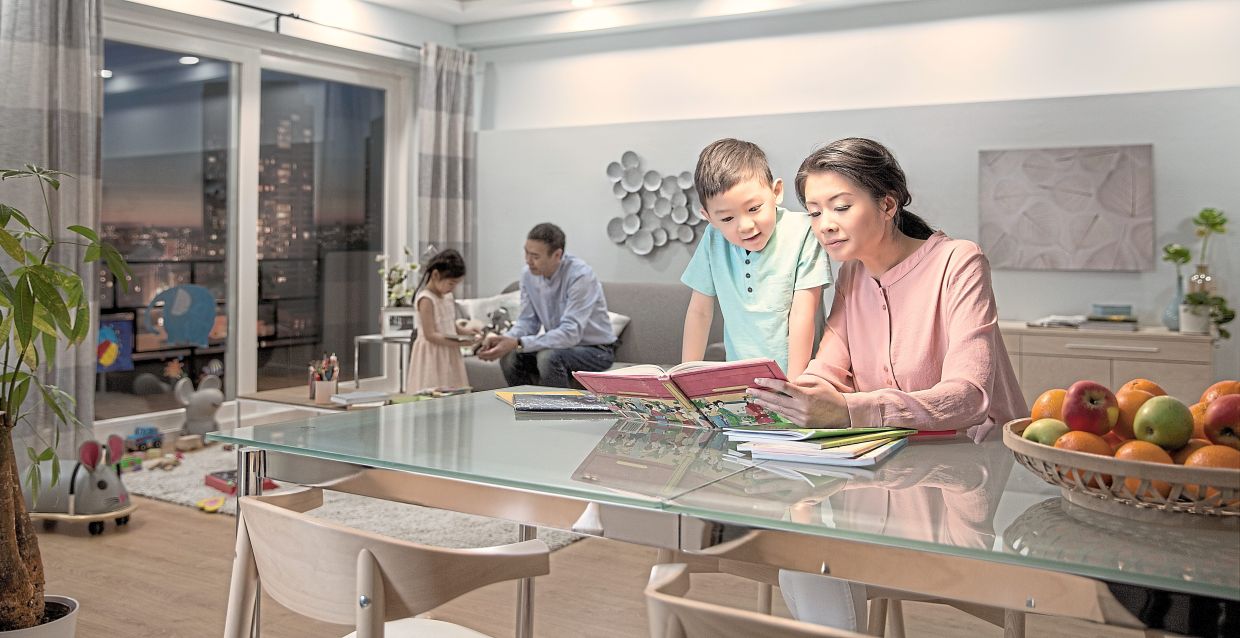Parents are showing increased awareness regarding proper lighting in their children's study environment. Photo: Cheong Karr Mei
Malaysian parents frequently pay attention on setting up a comfortable study space for their kids, giving top priority to components like a stable desk, comfortable chairs and appropriate study aids.
Desk illumination, however, is commonly disregarded by parents even though it is essential to preserving their children’s eye health.
Fortunately, this issue seems to change as many of them are showing increased awareness regarding proper lighting in their children’s study environment to prevent their kids from experiencing eye strain.
“Good desk lighting is necessary because it reduces the risk of short-sightedness or myopia in children,” says consultant ophthalmologist Dr Sunder Ramasamy.
“This helps them concentrate longer in their school work while allowing them good posture as they would not have to lean awkwardly during their study sessions.”
Signify head of marketing Lim Sau Hong says desk lighting plays a pivotal role in supporting children’s concentration, productivity and most importantly, eye health.
“Poor lighting can lead to a range of problems, including eye strain, headaches and even long-term issues,” he adds.
“That is why setting up a study space for kids is more than having a good desk and chair... it is also about the best lighting option.”
Lighting boosts focus
Mother-of-four Chew Pek Khoon, 41, states that lighting plays an important part in children’s study space as it helps set the right mood and atmosphere for them to learn or complete their homework. “I believe that proper study conditions encourage better learning,” she says.
Even though Chew’s kids currently study on her work desk at home and the dining table, she intends to have a study desk for them to use in the near future.
“If I decide to invest in a study desk for my kids, the table would have to be sturdy, customisable and long-lasting,” she says.
Although study desks and desk lamps are typically sold separately, Chew makes sure to search for good lighting fixtures that support her kids’ concentration and academic productivity.
“I prefer a desk lamp with white light, adjustable focus and brightness,” she adds.
On top of choosing good lighting for her kids, Chew also makes sure to keep an eye on her children’s eyesight by monitoring their leisure activities, especially screen time.
“My kids are still very young, so I always just remind them to be cautious about little things, like reading in the dark or staring at the screen for a long period,” she says.
Eye care tips
According to Lim, there are some practical tips that parents can follow to keep their kids’ eyes healthy.
Good lighting is designed to address typical lighting problems that can cause eye strain and discomfort he says.
“Parents would need good lights that are designed to reduce flicker, lessen glare and provide consistent brightness that helps create a comfortable, eye-friendly environment for their children,” he adds.
“Setting up suitable desk ergonomics could also help children from straining to read or stare at their computer screen. This is done by making sure that their chair and desk are at the appropriate height. Their monitor should also be at a safe distance, around an arm’s length, with the top at eye level.”
Screen breaks are also encouraged to keep children’s eyes healthy.
For every 20 minutes of screen time, parents should encourage children to look at something 6m away for 20 seconds. This practice is known as the ‘20-20-20’ rule and helps extend eye health and lessen digital eye strain.
According to Dr Sunder, parents should limit their kids’ screen time according to a child’s age.
“Toddlers aged three to five should only have 60 minutes of screen time per day. It is best to maintain a proper reading distance from screens and books (approximately a forearm’s length) to prevent eye strain,” he says.
Children between the ages of six and 10 should only spend an hour and 50 minutes each day in front of a screen.
“While developing digital skills is vital, parents should strive for a balance between their children’s creative and leisure time,” he adds.
Kids between the ages of 11 and 13 are allowed to have two hours of screen time per day.
“It is easy for children to understand the concept of balance at this age. But parental guidance is still necessary to help children understand how screen time fits into their daily routine,” he says.
“Children should also be encouraged to participate in outdoor activities with exposure to sunlight,” he concludes.







